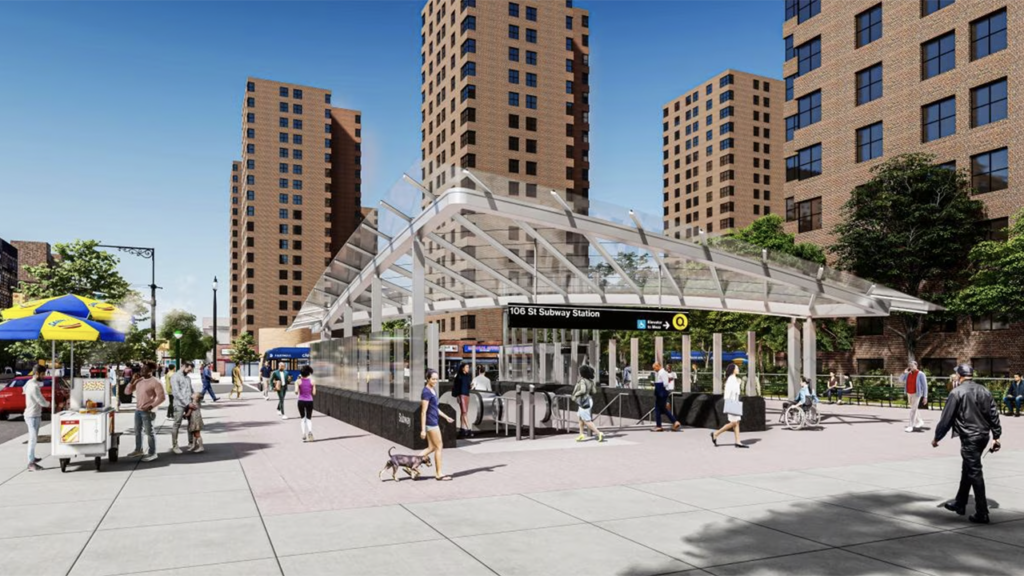
Transit Briefs: Amtrak, Caltrain, Maryland DOT, Metra, Montreal ARTM, New York State
Written by Marybeth Luczak, Executive Editor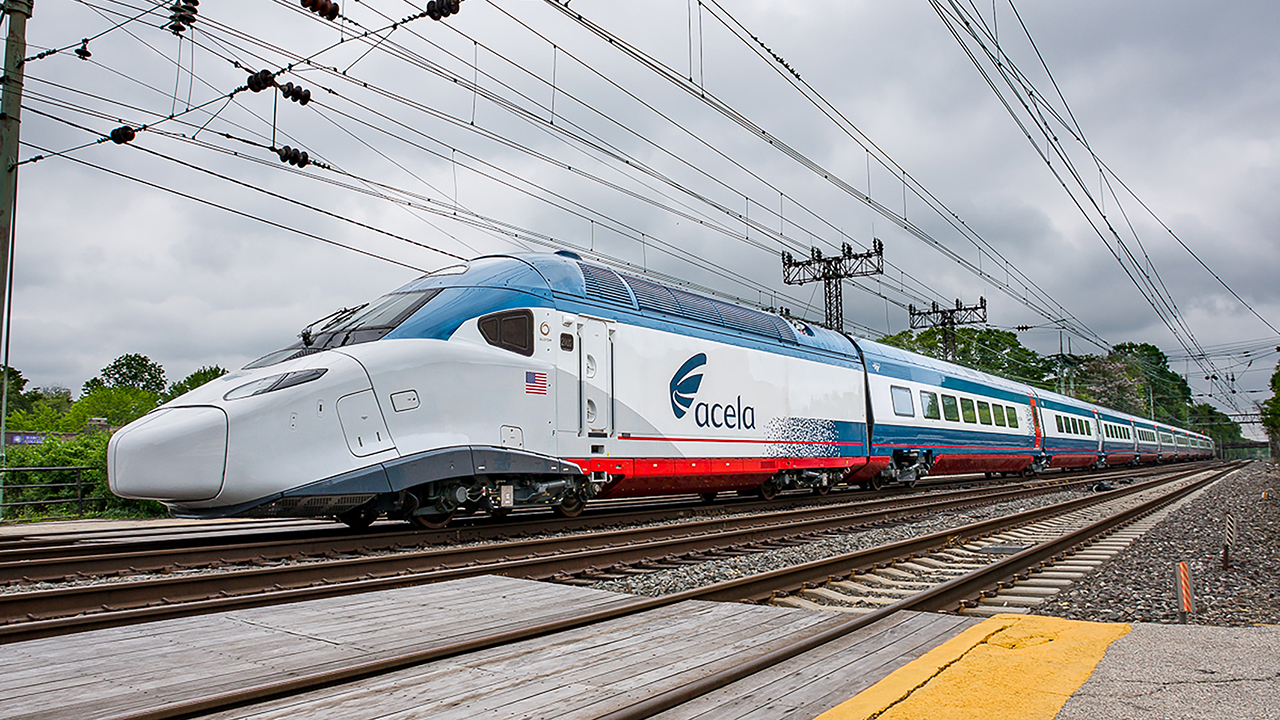
The Federal Railroad Administration has cleared Amtrak’s new Avelia Liberty trainsets to begin testing on the Northeast Corridor, according to The New York Times. (Amtrak Image)
Amtrak’s “Avelia Liberty” trainsets are cleared for testing on the Northeast Corridor. Also, Caltrain celebrates 160 years of rail service from San Francisco to San Jose, Calif.; Maryland Gov. Wes Moore restores $150 million in transportation funding; Chicago’s Metra is launching a pilot program for reduced fares systemwide; the Montreal region’s transit authority (ARTM) is considering new transit options that would link downtown Montreal with the city’s western boroughs; and New York Gov. Kathy Hochul provides highlights of the proposed FY2025 budget, which includes funding for the planned Interborough Express and the Second Avenue Subway’s westward expansion.
Amtrak
The New York Times on Jan. 13 reported that the Federal Railroad Administration (FRA) has cleared Amtrak’s new Avelia Liberty trainsets to begin testing on the Northeast Corridor (NEC), from Washington, D.C., to Boston. According to the newspaper, Amtrak said the trains, “which had failed an extended series of computer modeling tests, had passed on the 14th try.“
Testing the new Alstom-built trainsets on NEC tracks is “the next step in the safety certification process that leads toward launching revenue service,” Amtrak said in a statement to the Times, which noted that no revenue service date has been announced.
The testing also means progress for riders “who will soon discover a brand-new travel experience on the busiest rail corridor in America,” Alstom spokesman Cliff Cole told the newspaper.
Amtrak in 2014 initiated the $2.3 billion New Acela Program to replace its aging fleet of high‐speed trainsets on the NEC. “America’s Railroad” in August 2016 contracted Alstom to develop and manufacture 28 new trainsets, which were initially scheduled to begin revenue service in May 2021. As of July 2023, Amtrak had spent approximately $1.6 billion on the entire program, according to an Amtrak Office of the Inspector General (OIG) report released last fall.
Of the 28 trainsets, Alstom has delivered 10, which are now housed in a Pennsylvania yard, according to The New York Times. “Under the terms of the contract, Alstom was required to create a computer model to predict the performance of the trains before even starting to build them—a crucial stipulation, since the Federal Railroad Administration … must approve a model that demonstrates a train is safe before it can be tested on the Northeast Corridor tracks,” the paper reported. “The corridor’s curves, bridges and tunnels presented a particular challenge for Alstom. The region’s tracks are estimated to need more than $100 billion in repairs and upgrades for the new trains to reach maximum speeds through the entire corridor. By 2019, the company had run into trouble. According to Amtrak officials and Alstom representatives, the train manufacturer told Amtrak that computer modeling showed the new trains could not run safely on the Northeast Corridor tracks. Nonetheless, Alstom said the company could work out the problems and wanted to move ahead.”
According to the Times, Amtrak approved the build “because, Amtrak officials said, they felt they had no other choice. More recently, Amtrak officials acknowledged that they failed to put safeguards into the contract with Alstom to protect themselves in the event the company struggled to develop working trains.”
Amtrak Executive Vice President for Capital Delivery Laura Mason told the newspaper: “I think there’s some debate now after the fact whether or not that should be a contractual mechanism.”
According to the Times, the Amtrak OIG in a January 2020 report “warned of continuing delays and safety problems with the trains, as did another inspector general’s report in September 2023.” The newspaper, which obtained an unredacted version of the 2023 report, said that “inspectors found that the trains were still failing the modeling tests and that those that had been built so far had defects.” The defects were fixable, but the report said “some trains required ‘structural and design modifications’ while others needed ‘sealant, drainage or corrosion corrections,’” according to the Times.
Following the release of the 2023 OIG report, Alstom told Railway Age sister publication International Railway Journal that it was “working closely with the Federal Railroad Administration and Amtrak as we work through their first-ever safety certification for high-speed trains to ensure that these new trains meet all FRA requirements for entry into service. As part of the validation, in addition to ongoing modeling activities, we have already successfully run these trains on the FRA’s Pueblo, Colo. test track at high speed and on the Northeast Corridor for a total of nearly 70,000 miles.
“Alstom continues to produce these, the first American, union-made, high-speed Avelia Liberty trains in Hornell, N.Y. It is industry standard to begin production simultaneously with validation … We are surprised with so-called ‘defects’ that the OIG report identifies. Every train that has been released from the manufacturing site were authorized for shipping by Amtrak after thorough inspections, with identified modifications to be completed prior to acceptance. These modifications will be completed before final acceptance of the trainsets, as it is foreseen in the contract and customary in our industry. These modifications, along with additional changes that has Amtrak requested are in no way in the critical path of completion of this project.”
In a related development, Amtrak on Dec. 22 issued a Request for Proposals to railcar manufacturers to begin the process of replacing its current Long-Distance Fleet.
Caltrain
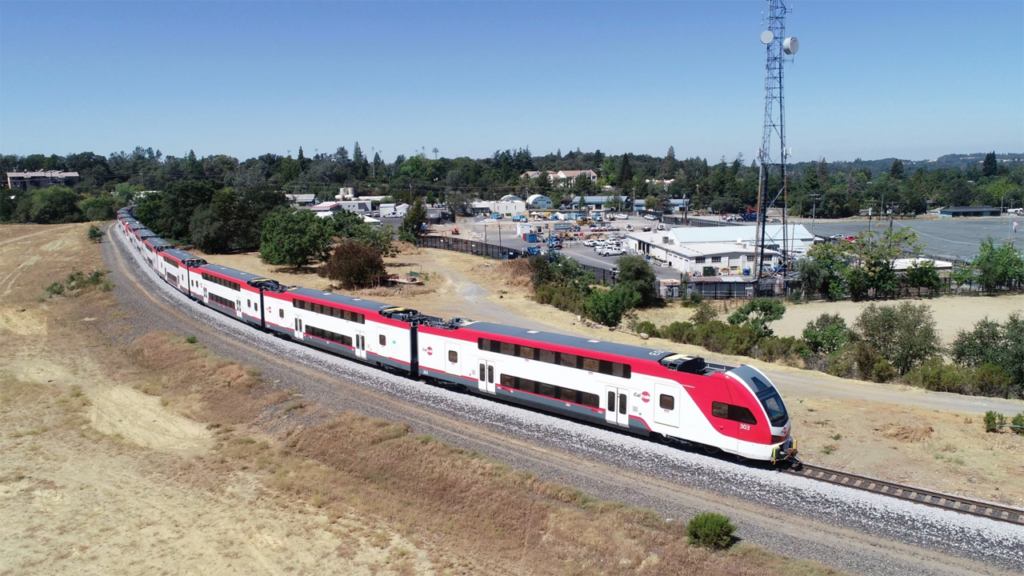
Jan. 16 marked the 160th anniversary of the launch of San Francisco-San Jose passenger rail service. “The creation of this rail corridor, which has been in constant use for the past 160 years, was central to the development of the San Francisco Peninsula and South Bay,” according to Caltrain. “Most of the cities that can be found along the corridor built their downtowns around the railroad, allowing communities to form and grow together. Easily accessible transportation led to economic prosperity and development, as trains could move far more people and goods than stagecoaches traveling on dirt roads, which would take between eight hours and three days depending on weather.”
The idea of creating a rail line between the two cities first came about in 1851, while San Jose was still capital of California. After three failed attempts to obtain funding, the San Francisco and San Jose Railroad incorporated in 1860. Construction began in May 1861 at San Francisquito Creek, and regular service from San Francisco to Mayfield (now the California Avenue Station) began in October 1863, with San Jose-bound riders transferring to a stagecoach for the remainder of their journey. In 1864, the line was completed—eight years after Railway Age started publishing.
“There has been much talk of history as Caltrain’s historic Electrification Project, the first undertaking in North America in a generation in which diesel trains and their infrastructure components are transitioned to an electrified system, approaches completion later this year,” according to Caltrain. “Electrification means faster and more frequent service, including doubling the frequency on weekends. The passenger experience will be greatly improved as well with the new trains featuring Wi-Fi, power outlets at every seat, onboard displays with digital trip information, and increased storage capacities.”
This spring, Caltrain is slated to hold its third public electric train tour and will combine the tour with a celebration of its 160th anniversary.
Caltrain announced Jan. 5 that three of its eventual 23 electric trainsets have completed 1,000 miles of testing along the agency’s corridor. The entirety of the new fleet must meet all safety and quality standards prior to the launch of electrified service in fall 2024.
The service is arriving two years later than planned. The commuter railroad’s $2.4 billion electrification project is upgrading and electrifying its double-track system from the 4th and King Station in San Francisco to the Tamien Station in San Jose and replacing trains. Caltrain awarded Stadler a $551 million contract to supply 16 six-car EMUs in August 2016 with an option to extend these sets to seven-car trains exercised in December 2018. The 110-mph-capable trainsets have been built at the manufacturer’s plant in Salt Lake City, and there are options worth $385 million under the original contract to supply up to 96 additional railcars. The EMUs will replace F40 diesel locomotives—approximately 75% of Caltrain’s diesel fleet—which entered service in 1985. Its newer locomotives will be retained to operate the non-electrified Dumbarton extension and services south of Tamien.
Caltrain currently has six new trainsets on property, with the remainder expected to arrive from the Stadler over the next year.
Maryland DOT
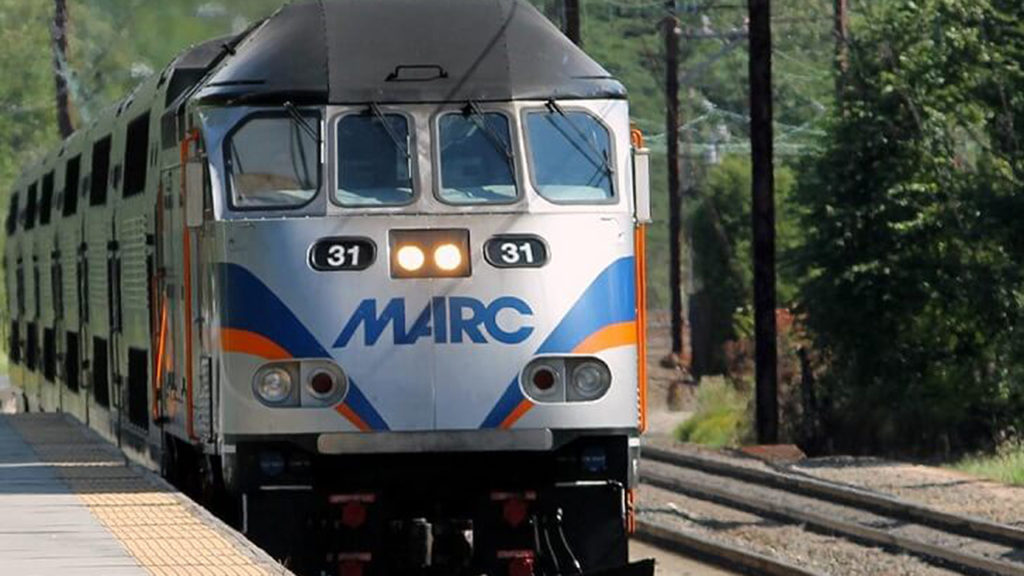
As part of Maryland Gov. Wes Moore’s Fiscal Year 2025 budget proposal, he announced Jan. 16 the one-year restoration of $150 million in funding to “address critical transportation needs across the state,” according to the Maryland Department of Transportation (DOT). That proposed funding will allow the restoration of previously planned reductions to the DOT’s budget.
“This is a season of discipline, and our choices must reflect our priorities,” Gov. Moore said. “Our budget helps grow our economy and our transportation budget is essential to that mission. By providing a critical funding bridge, we’re helping Maryland’s working families continue to have access to places where they work, places where they learn, and other essential destinations. We appreciate the partnership and leadership shown by so many on the local level who worked with us to make their concerns heard.”
Following the release of its draft capital program in September 2023 that revealed a $2.1 billion deficit, the DOT said it visited Baltimore City and each county to discuss “transportation priorities.” In December 2023, DOT published an Overview of the Final Fiscal Year 2024-2029 capital program, which showed the deficit had grown to $3.3 billion. The December Overview previewed the reductions necessary to close the shortfall in the department’s six-year capital program, as required by law, according to DOT.
DOT reported that Maryland’s Moore-Miller Administration continued to engage with stakeholders across the state to learn more about the impact of potential transportation budget reductions, hearing directly from the community about concerns related to disruption in critical services. As a result, Gov. Moore determined to commit $150 million in general funds on a one-time basis to help relieve pressure in FY2025 on the state’s Transportation Trust Fund.
With this infusion of funds, DOT said it commits:
- $52 million to fully restore Highway User Revenue funding.
- $26 million to fully restore Locally Operated Transit System operating grants.
- $28 million in Maryland Transit Administration commuter bus funding to maintain service on the highest ridership routes.
- $15 million for critical state of good repair needs at the Maryland Transit Administration to meet the required funding levels under the Transit Safety and Investment Act.
- $10 million in State Highway Administration highway mowing and litter removal funding to maintain roadways and communities.
- $8 million in MARC Brunswick Line operating resources to maintain service frequencies to West Virginia and to launch a new mid-day service pilot.
- $5 million in DOT-wide information technology and cybersecurity upgrades.
- $4 million in Motor Vehicle Administration operating dollars to maintain branch hours and keep open limited-service branches.
- $2 million in Maryland Aviation Administration priority contractual services to retain key operations at BWI Thurgood Marshall Airport.
Metra
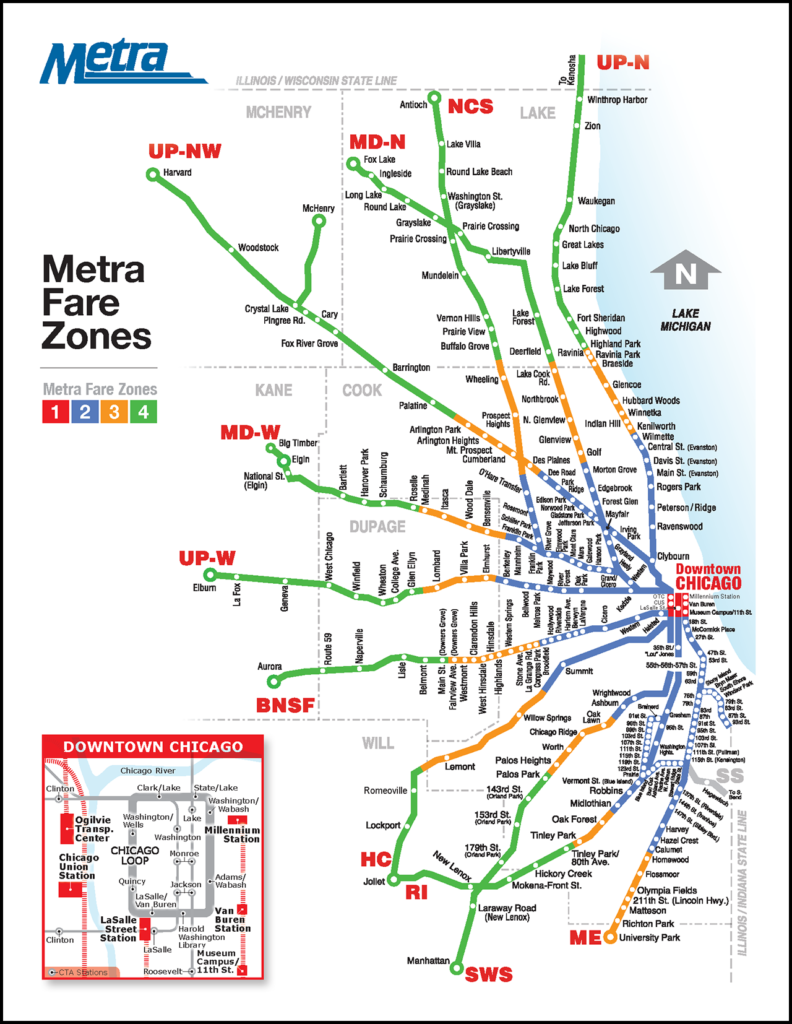
The Regional Transportation Authority (RTA), Metra, and Cook County, Ill., are partnering to extend reduced fares to low-income Metra riders region-wide through the Access Pilot Program. All recipients of the Supplemental Nutrition Assistance Program (SNAP) living in the counties of Cook, DuPage, Kane, Lake, McHenry, and Will are eligible to apply. As of 2020, the total number of individuals receiving SNAP benefits in the region was approximately 1.2 million. Of those, approximately 777,000 (63%) were adults. The pilot program is slated to run from Feb. 1, 2024, to July 31, 2025.
According to Metra, the Access Pilot Program is an 18-month expansion of the RTA’s current Ride Free and Reduced Fare programs, which will continue to be available to older adults and individuals with disabilities. Cook County will contribute $6 million to the program, with RTA and Metra also contributing funds to cover the administrative costs and any lost operating revenue. The pilot will help RTA and the transit agencies “better understand issues of affordability and structure a permanent program if funding becomes available,” Metra reported.
Metra reported that all the region’s stakeholders are “eager” to see the Access pilot also expand to the Chicago Transit Authority (CTA) and Pace bus service and are seeking the funding needed for that expansion. This pilot is currently only valid for Metra, and it comes as the Fair Transit South Cook program ends Jan. 31. Fair Transit South Cook provided reduced fares to all riders on the Metra Electric and Rock Island lines regardless of income level or need. The Access Pilot Program expands this benefit to the entire Metra system, while adding an eligibility requirement for those with the lower incomes, as defined by SNAP eligibility.
“Fully funding and expanding regional reduced fare and ride free programs increases access for those residents who need it most,” RTA Executive Director Leanne Redden said. “The Access Pilot is a big step forward for our region to allow equitable and affordable transit access to SNAP recipients. This pilot expands upon RTA’s existing reduced fare and ride free programs and provides a seamless transition from the Fair Transit South Cook pilot. Making transit payments more seamless and affordable is a commitment RTA made in our regional transit strategic plan, ‘Transit is the Answer,’ which was co-created with input from thousands of riders, advocates and stakeholders.”
“We are excited to partner with the RTA and Cook County on this new pilot,” Metra Executive Director/CEO Jim Derwinski said. “Advancing equity in transportation is one of the key goals of Metra’s new strategic plan, ‘My Metra, Our Future,’ and this program will go a long way toward helping Metra to meet that goal.”
“Making our public transit system more affordable has been a cornerstone of Cook County’s commitment throughout the Fair Transit South Cook pilot,” Cook County Board President Toni Preckwinkle said. “The Access Program aligns with my administration’s commitment to achieving equity, as outlined in both the Cook County Transit Plan and Policy Roadmap.”
Montreal ARTM

CityNews Everywhere on Jan. 16 reported that ARTM, Quebec Transport Ministry and the city of Montreal are considering six options linking Montréal’s Grand Sud-Ouest area to downtown, following two-and-one-half years of studies.
The media outlet said they are seeking public feedback on these options:
- “A tramway or bus transit corridor extending to les Galeries de Lachine shopping centre from the Angrignon métro station.
- “A tramway or bus transit corridor that would include the Ville-St-Pierre neighbourhood, CEGEP André Laurendeau, and the LaSalle hospital. This would also connect Du Canal and LaSalle train stations.
- “A tramway or bus transit corridor linking the Dorval bus terminal and train station to the Angrignon métro station.
- “A new connection from Dorval to Lionel-Groulx by tramway or bus transit corridor.
- “A new route linking Dorval to the Square-Victoria station downtown.
- “A métro extension for the Green Line at Angrignon to 32nd Ave. in Lachine or the LaSalle train station.”
The public can provide feedback on the routes and modes through Feb. 11. ARTM said it is developing an “opportunity file” that is used to “assess the relevance of a project and recommend the most appropriate long-term solution to meet the needs expressed with the financial resources available.” A first version of its opportunity file will be submitted to the Québec government in 2024.
New York State
New York Gov. Kathy Hochul on Jan. 16 reported highlights of the proposed FY2025 budget, which she said “makes it clear that fiscal discipline can co-exist with progressive, people-driven policies.”
According to the Governor’s Office, all funds spending is $233 billion, growing 4.5%, and the governor prioritized bolstering the state’s reserves, which currently sit at just over 15% of operating costs.
The budget includes investments to continue road, bridge and safety improvement across New York including:
- $7.9 billion in state operating aid for the New York Metropolitan Transportation Authority, “which Governor Hochul saved from the ‘fiscal cliff’ in last year’s budget.” The funding includes resources collected by the state and sent directly to the MTA without appropriation. Traditional on-budget MTA assistance will increase 3.4%, from $4.1 billion to $4.2 billion.
- $7.6 billion for the third year of the five-year $32.9 billion Department of Transportation Capital Plan, “the largest in New York’s history.”
- $577.8 million in funding for the Consolidated Highway Improvement Program (CHIPS) and the Marchiselli Program.
- $551 million for non-MTA transit in the downstate region.
- $323 million for transit systems in upstate New York.
- $100 million for the Pave our Potholes (POP) Program.
- $45 million for the Interborough Express project. The funding will be used to advance design and engineering for this project, which will connect neighborhoods along a 14-mile existing freight right-of-way from Bay Ridge, Brooklyn, to Jackson Heights, Queens. The Interborough Express planning and environmental linkages study recommended light rail as the preferred option for providing “fast, frequent service” connecting the Interborough with up to 17 different subway lines and the MTA Long Island Rail Road.
- $16 million to move forward with the planning of the Second Avenue Subway extension to Broadway. With Phase 2 under way, the next major potential phase of this project is extending the Q line west along 125th Street, with three new stops at Lenox Avenue, St. Nicholas Avenue, and Broadway in Manhattanville. The new funding will be used to advance a feasibility study, environmental review and preliminary engineering for this project.
- Introducing a comprehensive safety package to address the remaining legislative recommendations from the Stretch Limousine Passenger Safety Task Force.
